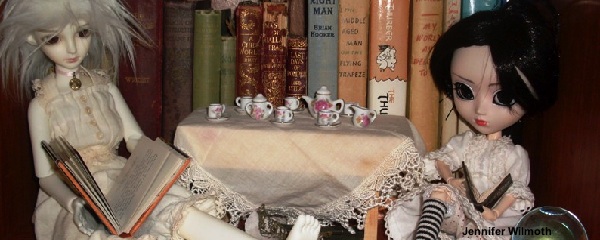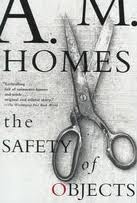
Photo by Jennifer Wilmoth
By Ruth Quinlan
A.M. Homes is the writer to turn to when you want someone to lift the floorboards of everyday life and show you the roaches scurrying underneath.
‘A Real Doll’ is the story of a teenage boy’s erotic obsession with his younger sister’s Barbie doll. Published in 1990, it is the final short story in The Safety of Objects. After the publication of her novel Jack, it was this collection that cemented Homes’ reputation. She became known as a writer who was not afraid to document the twisted things we sometimes glimpse in the mirror. The collection shows that the banal objects with which we surround ourselves are sometimes very far from safe and can instead lead us down dark paths.
The story starts on a gentle note with the boy declaring that he’s dating Barbie three afternoons a week while his sister Jennifer is at dance class. He chats amiably about how he brings Barbie out on their first date to the back-yard. There, he discovers that she’s a Tropical Barbie and that she squeaks when she talks. Captivated, he describes her eyes as ‘sparkling blue like the ocean on a good day’; she has ‘an entire galaxy, clouds, stars, a sun, the sea’ painted on her face.
It is only when he goes inside to fetch Barbie a Diet Coke that we realize we have been deceived and that Homes has lulled us into a false sense of complacency. The boy takes a couple of Valium from the bathroom medicine cabinet, breaks one into the Coke and swallows one himself; we are presented with a teenager self-medicating with prescription drugs and feeding them to his ‘date’ to eradicate inhibitions. This is a far cry from the seemingly innocent, romantic role-play that opens the story.
 His reasoning behind the medication is simple, ‘I figured if I could be calm and collected, she’d realize I wasn’t going to hurt her’. He repeats this justification a little later, ‘I figured if we could be calm and collected together, she’d be able to trust me even sooner’. However, he also admits that he is ‘falling in love in a way that had nothing to do with love’. He may be young, but he is self-aware enough to know that what he’s feeling for Barbie is not love. He wants something else entirely from her and what he wants will require trust, or at least the illusion of it. There is a world of difference between the base urges of lust and the romantic notion of love – and with this one sentence he reveals that his intentions have no basis in the latter.
His reasoning behind the medication is simple, ‘I figured if I could be calm and collected, she’d realize I wasn’t going to hurt her’. He repeats this justification a little later, ‘I figured if we could be calm and collected together, she’d be able to trust me even sooner’. However, he also admits that he is ‘falling in love in a way that had nothing to do with love’. He may be young, but he is self-aware enough to know that what he’s feeling for Barbie is not love. He wants something else entirely from her and what he wants will require trust, or at least the illusion of it. There is a world of difference between the base urges of lust and the romantic notion of love – and with this one sentence he reveals that his intentions have no basis in the latter.
After this point (i.e. after he has fallen ‘in love’) the relationship between the boy and Barbie becomes an exploration of the power he exerts over her. At the end of their first date together, he puts her head into his mouth, like a ‘lion and tamer, God and Godzilla’. Comparing himself to these figures, he is associating with representations of ultimate power. The tamer subjugates nature’s monarch; the lion, God, and Godzilla exert their supremacy through slaughter, creation, and annihilation. The lion and tamer relationship is inverted here as the tamer often puts his head inside the mouth of the lion to demonstrate complete control. In this scenario, Barbie should be the tamer, yet it is the boy (here, he is the lion) who forces her head into his mouth.
There is an animalistic quality to their relationship, a coalescence of pleasure and pain. The boy bites her neck, licks her face, and sucks her feet, until eventually he progresses to masturbating with her in his bedroom. He thinks about how he is ‘forever crossing a line’ between ‘good guys and bad, between men and animals’. When he climaxes, he describes it as the ‘most horrifying experience’ he has ever had. He can’t even look at Barbie afterwards, even though she begs him not to stop. However, in a moment of clarity, he admits that ‘maybe I just think she said that because I read it somewhere. I don’t know anymore’. The fantasy world is starting to crack and shame is creeping in.
When he goes to the toy-store to buy Barbie a present, he is surrounded by rows upon rows of Barbie doll replicas. He imagines himself becoming a slave to Barbie, having to sexually service each doll before discarding it onto a growing pile in the corner of his room. In response to this overwhelming image, he feels faint. We get a sense that the boy is starting to realize he’s losing control of his own fantasy.
One day, he sees that his sister has swapped Ken and Barbie’s heads. He accidentally knocks Barbie’s head to the floor when picking up the doll and sees that his sister has used red pins as earrings for Barbie. The pins go right through her head. When he tries to explain this to Barbie, (who thinks she is supposed to get used to the resulting headaches) she can’t understand him. He admits that he is ‘starting to hate her’. However, in contrast, he becomes increasingly aroused by the Ken doll.
After his sexual experience with Ken, he worries about his future life as ‘queerbait’. However, soon afterwards, he decides that he wants to play with Ken and that he might take him out instead of Barbie. They could play ball together; ‘it was a boy thing, we were boys together’. He then smashes Barbie’s head ‘back on her own damn neck’. He has started to turn away from the object of his obsession, seeking male companionship – even if it is in the form of another doll.
 In an attempt to win back his affections, Barbie pleads with him to have sex with her and he wonders if Jennifer knows that her toy is a nymphomaniac. While the image of a nymphomaniac Barbie draws a sly grin, there is also the possibility here that Homes is commenting on society’s judgment of sexually forward women. Everything is fine while the boy is the one making advances, but when Barbie attempts to do so, he retreats from her. He responds to her increasingly desperate advances by saying, “You don’t belong with little girls”. For him, Barbie is a sexual object and thus no longer fit for associating with children. This is a neat illustration of Freud’s Madonna-whore complex where women are artificially divided into two categories: saintly mother-carers and debased, prostitute-like personalities.
In an attempt to win back his affections, Barbie pleads with him to have sex with her and he wonders if Jennifer knows that her toy is a nymphomaniac. While the image of a nymphomaniac Barbie draws a sly grin, there is also the possibility here that Homes is commenting on society’s judgment of sexually forward women. Everything is fine while the boy is the one making advances, but when Barbie attempts to do so, he retreats from her. He responds to her increasingly desperate advances by saying, “You don’t belong with little girls”. For him, Barbie is a sexual object and thus no longer fit for associating with children. This is a neat illustration of Freud’s Madonna-whore complex where women are artificially divided into two categories: saintly mother-carers and debased, prostitute-like personalities.
Eventually giving into Barbie’s demands, he rips her clothes off, but discovers that Jennifer has sliced Barbie’s skin and drawn on her. He asks Barbie why she lets Jennifer do such things to her. She responds by saying simply, “Jennifer owns me”. In reaction to this, he becomes ‘crazy’ with jealousy, realizing that the relationship between Jennifer and Barbie is ‘one of those relationships that could only exist between women’. Jennifer didn’t ‘want’ Barbie, as she already ‘had her’. This is an unvarnished admission that he sees Barbie as a possession; he wants to control her yet he cannot do so completely because Jennifer remains the prevailing owner. The sexual relationship he has with Barbie is of lesser importance because her ties to Jennifer will always override her ties to him.
This holds true even when Jennifer goes so far as to disfigure Barbie. The things that Jennifer has done to her sicken him, but he cannot do anything to stop the mutilation because Barbie belongs to her. He is powerless to act without openly admitting that Barbie means something to him – and he will never do so.
When he sees Barbie in her final, destroyed state, instead of acting like the amorous lover of earlier, he examines her in detail, ‘like a scientist’, like a ‘medical examiner’. Transformed from the thing of beauty she was when they first met, Barbie is now scarred and hacked apart. ‘She was smiling, and she was burned. She was smiling, and she was ruined.’ She is no longer desirable, and he walks away, ignoring her when she asks in the last line, “Hey, aren’t we going to play?” The object of his lust and obsession is now merely a defaced toy that belongs to someone else.
Homes takes the innocent role-play of childhood and escalates it into a story of lust-fuelled obsession, laced with dark humour. She explores the seamier facets of our sexual urges: the paradoxical connection between pleasure and pain, the conflicting dualism of man’s sexual evaluation of women, and the concept of women as man’s possession. What is so disconcerting, yet intriguing, about this story is that all of the above is done by taking a mass-produced, familiar object like Barbie and showing what can happen once our secret fantasies are let loose.
‘A Real Doll’ should be read to catch a glimpse of what roils beneath the bland, homogeneous surfaces of American suburbia. Read it if you never want to look at a Barbie doll in quite the same way.


One thought on “Playing with Dolls”
Comments are closed.